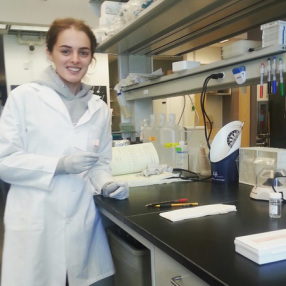Radicava® vs Deanna Protocol®
To understand what the differences between Pharmaceutical and Nutraceutical are, we should begin with their definitions:
phar·ma·ceu·ti·cal
Adjective
- Relating to medicinal drugs, or their preparation, use, or sale.
Noun
- a compound manufactured for use as a medicinal drug.
nu·tra·ceu·ti·cal
Noun
Plural noun: nutraceuticals
a food containing health-giving additives and having medicinal benefit.
Now, let’s compare the new drug approved by the FDA Radicava® vs The Natural alternative for a better quality of life, the Deanna Protocol®.
- 10 Things to Know About the New ALS Drug Radicava®
- It is a Pharmaceutical drug.
- The drug underwent a phase 3 clinical trial in Japan and South Korea where 137 ALS patients were given either Radicava® or a placebo. The group given Radicava® experienced a 33 percent reduction in the decline of their physical abilities compared to the placebo group.
- Radicava® works by reducing the oxidative stress in the body. People with ALS have high levels of oxidative stress.
- Radicava® is administered via intravenous infusions. Initially, patients have a daily infusion for two weeks and then have two weeks’ rest. After that, they need to have 10 consecutive daily infusions followed by two weeks of rest.
- Each infusion takes around an hour to complete.
- The dosage of each infusion is 60 mg.
- The cost of each Radicava® infusion is about $1,000 and it’s reported that the treatment costs about $146,000 annually.
- Radicava® should be available to ALS patients in the U.S. by August.
- The most common side effects associated with the drug are headaches, bruising and gait problems.
- Radicava® infusion contains sodium bisulfite which is known to cause both mild and severe allergic reactions in some people (particularly those with asthma).
- 10 Things to Know About the Deanna Protocol®
- It is a naturally derived Nutraceutical program.
- Developed by Doctor Vincent Tedone, a retired physician (Orthopedic Surgeon), for his daughter Deanna who was diagnosed with ALS at the age of 30 in 2007.
- The Deanna Protocol® has undergone double blind clinical trials at the University of South Florida in mice models. The Deanna Protocol® has over 1,500 anecdotal case studies from patients with ALS.
- The Deanna Protocol® is a blend of nutritional powders and liquids that contain powerful antioxidants and amino acids essential to assist your body in its natural efforts to fight neurodegenerative damage. People suffering from other neurodegenerative diseases, such as Parkinson’s and Alzheimer’s, have also reported improvements.
- It is taken in the morning, in the afternoon and at night as part of your regular, at home, breakfast, lunch and dinner routine. No need to go to the clinic.
- The Protocol is the same for everyone but the dosages might vary, depending on the person and what their specific needs are. The most common side effect is an upset stomach usually reported during the initial days as the body adjusts to the protocol.
- The cost of the Deanna Protocol® starts at $219.99 for the Core Bundle #1. The next most inclusive package is the Plus Bundle #1 at $249.99. And our most inclusive bundle is the Comprehensive Bundle #1 at $349.99. Above prices are for a 1 month supply and include easy-to-follow, step-by-step instructions and an actual human to answer your questions and provide you with the support you need.
- Not sure? At Simplesa’s website there’re 330+ reviews with 4.5 stars from verified and satisfied buyers at simplesanutrition.com or call 1-888-578-5528.
- Deanna Protocol® has been in the market for almost 4 years. The popularity of the protocol and the positive reports from the clients, speak for themselves.
- The freshness of the products used in the Deanna Protocol is guaranteed, these products are naturally derived and are manufactured in a facility that follows strict Current Good Manufacturing Practice (cGMP) (Enforced by the FDA) and is UL (Underwriters Laboratories) certified.
This Blog is for educational purposes. We hope that the above information helps you make the right decisions to address your neuro-degenerative concerns. And as always consult your physician.
If you liked this article, please share with others
that could benefit from this information.
Remember Sharing is Caring!
These statements have not been evaluated by the FDA. These products are not intended to diagnose, treat, cure or prevent any diseases.
Sources:
alsnewstoday.com
winningthefight.org
simplesanutrition.com/deanna-protocol/




